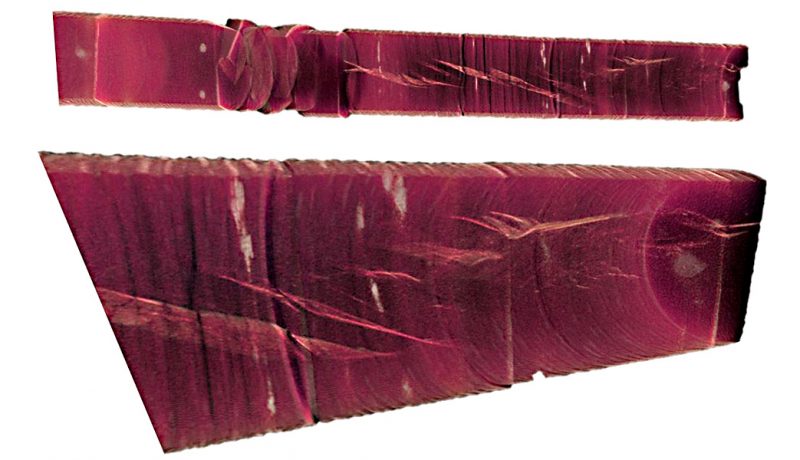SyGlass hailed for 3D visualization, data analysis

Geological researchers are touting the benefits of SyGlass, a software that enables 3D visualization and analysis of volumetric data at the submillimeter scale.
The National Energy Technology Laboratory’s (NETL) Reservoir Engineering Team is using the technology to explore the microscopic spaces in rocks, called pores, to take measurements as they seek a better understanding of how liquids and gases interact. The measurements, officials said, are expanding scientific knowledge of the subsurface environment to ensure safe and effective carbon storage, enhanced resource recovery, and basic scientific understanding of subsurface phenomena.
“When we can measure that contact angle, it tells us how easily CO2 will go into the rock or displace the liquid that’s already there,” Johnathan Moore, a research geologist working with NETL’s Reservoir Engineering Team, said. “SyGlass gives us a better way of drawing our data markers. You can actually walk inside your data, inside the 3D volume of a rock pore, and zoom into little microscopic features to see them in a much higher resolution than you would on a two-dimensional screen.”
SyGlass incorporates a series of images into a 3D structure, using a virtual reality headset for enhanced scientific analysis. It is also engineered to minimize the simulation sickness often occurring with virtual reality devices as a result of experiencing visual stimuli without corresponding physical stimuli.
The software will primarily be used to investigate multiphase flow, relative permeability, and other geophysical processes, officials said. Moore noted that other applications are being explored, such as modeling of advanced combustion turbines.
